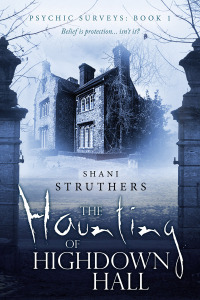Shani Struthers's Blog, page 3
April 13, 2016
So How Many Wrongs Make a Right?

Huge congratulations to Stella Birrell, whose novel debuts today from Crooked Cat Publishing. How Many Wrongs make a Mr Right is a chick-lit-with-grit novel set in the Lake District and Edinburgh. Grab a coffee, sit down and read an extract:
‘OK, here’s an idea. If he’s pretending Tuesday didn’t happen, then you pretend it didn’t happen. Then he can decide all over again that he wants to be with you. Maybe you could knock him back or something? Then he’ll be dying to ask you out officially.’ Knock him back? I thought tonight was a dead cert. I shaved my legs for goodness sake.
‘I suppose I could play hard to get. Oh, I am so bored of playing the game!’ I whine. ‘When does it get easier?’
‘When you find the right person and they find you,’ replies Julie, wisely (also, if I’m honest, a little smugly). Right, we’d better get back to the boys before I start in on Julie with ‘yeah-about-that-didn’t-you-know-the-unwritten-I-saw-him-first-rule-regarding-your-boyfriend-I-think-you’ll-find-by-this-legislation-he-should-be-with-me.’ I have held out against this so far, yes, mostly because it’s ridiculous, not to mention legally unenforceable. I’m certainly not going to bring it up after three WKDs. I’d rather be with James anyway.
So we went back to the group. I smiled, flirting with him as much as I could, trying to be sparkling company. He’s a good laugh, James, a real catch. I’ve started to wonder if I can really hold such a full house of a man. Maybe I need to assign him to the Sid category, awfully nice, but no point in making an effort because there is such a thing as punching above your weight. Especially when you’re overweight.
Now I’m walking with Sid, with Gerry next to him. James is on the other side of Gerry, discussing some golf course they are planning to go to next weekend. I catch James’s eye, and wink at him. He smiles at me. Man, he’s so fit. No way am I giving up yet.
We pay our way into Frankies. As usual, I lose everyone immediately. This used to really panic me, especially when I hardly knew anyone here, but I’m completely used to it now. It’s not actually a big place, I’ll bump into them later. The music is absolutely thumping, as always; both the dance floor and the bar area are already rammed with people. The special Frankies smell is on the air; beer, smoke, sweat, and overtones of heady sexual promise.
***
 About the Author
About the AuthorStella Hervey Birrell is an emerging writer of women’s fiction living in East Lothian, Scotland. She has lived in various places in Scotland and England and has had various jobs, none of which have paid particularly well. Her experience of Mr Wrongs is unparalleled, but she found a happy ending with her husband and two children, even though there appears to be a lot of laundry in ‘ever after.’
How Many Wrongs… is her first novel, and is published with Crooked Cat Books.
Stella also writes short stories, sings in a band, yells at her kids a lot, and most days can hardly believe her luck.
How to find me!
Please come and say ‘hi’ in one or more of these places
My blog space is https://atinylife140.wordpress.com/
Twitter is @atinylife140
I have a page on Facebook at https://www.facebook.com/stellaherveybirrell/?ref=hl
I can also be found wandering the streets of various East Lothian villages.
To purchase Stella’s book, please use one of the following links:
UK Amazon
http://www.amazon.co.uk/How-Many-Wrongs-make-Right-ebook/dp/B01D0EO7G0/
US Amazon
http://www.amazon.com/How-Many-Wrongs-make-Right-ebook/dp/B01D0EO7G0/
Kobo
https://store.kobobooks.com/en-us/ebook/how-many-wrongs-make-a-mr-right
Nook
iBooks
Search ‘How Many Wrongs make a Mr Right?’ in the iTunes Store


April 1, 2016
Pica – The Natural World and the Lost World
It’s a big welcome to Jeff Gardiner today – not only editor of all my books (and someone I can highly recommend) but an author too. Here he’s telling us about his latest release with Accent Press called Pica, a YA novel blending the natural world with ancient mystery and, of course, a thrilling story. As well as what inspired him to write it, he shares an excerpt, blurb and those all-important buy links. Take it away, Jeff…

In our Western culture we are becoming horribly dependent upon modern technology. I worry about my children and what experts call ‘screen time’. How many hours each day should children be allowed to spend behind a screen? How will it affect their health and mindset? It’s something I’m sure all parents worry about.
As a child myself, my parents took me for lots of walks in the countryside: forests, lakes and hills. These walks inspired me to take an interest in birds, wildlife and the world around me. There’s nothing quite like a walk in the rugged outdoors.
How many children and families visit the countryside or go on walking holidays? As a teacher it disturbed me when some pupils told me they never went to the countryside. I live close to the downs and a huge forest, plus a number of fascinating National Trust locations, but some pupils gave me a blank look when I mentioned them.
So ‘PICA’ is my response to young people who tell me that nature is ‘boring’. No it isn’t. Our planet is awe-inspiring and filled with ancient mystery. Humans used to live close to nature and their lives fitted around the rhythms and patterns of the natural world. There must be ancient magic and secrets that have been lost over time. ‘PICA’ is set in the modern world and it explores the idea that we can rediscover those ancient mysteries. Luke is a teenager whose life is blown apart when he realises what amazing secrets are contained within nature…
Blurb
Pica explores a world of ancient magic, when people and nature shared secret powers.
Luke hates nature, preferring the excitement of computer games to dull walks in the countryside, but his view of the world around him drastically begins to change when enigmatic loner, Guy, for whom Luke is reluctantly made to feel responsible, shows him some of the secrets that the very planet itself appears to be hiding from modern society.
Set in a very recognisable world of school and the realities of family-life, Luke tumbles into a fascinating world of magic and fantasy where transformations and shifting identities become an escape from the world. Luke gets caught up in an inescapable path that affects his very existence, as the view of the world around him drastically begins to change.
Extract
A magpie (Latin name – Pica pica) has been persistently knocking on Luke’s window, and everywhere he goes he sees magpies. One day he decides to let the magpie in…
As soon as I pushed the window outwards the waiting bird hopped in, making a sound that almost equated to a tut. That can’t be right. I was imagining things again. My first fear that the magpie would squawk and flap about madly was unfounded, but I still felt nervous in its unpredictable presence, and had to keep trusting it wouldn’t poo on my bed.
But it didn’t. In fact, it acted with excellent manners. What kind of bird was this? Wild birds don’t enter houses after knocking politely. If a bird does accidently get into a house it goes completely mental and craps everywhere. This one looked at me with eyes that gleamed with intelligent understanding. It knew me. I swear, it looked at me and knew I wouldn’t hurt it. In the old days I would have looked for a stick or a weapon. Now things were different, and I stared back at him with utter fascination. I moved even closer, confident I wasn’t in any danger.
‘You need to choose your friends more carefully, Luke.’
I stumbled slightly and had to grip the windowsill with my fingertips to hold myself up.
What the –?
The sodding bird had only gone and spoken to me. It snapped its beak, glared at me sideways, then flicked its tail.
Was that for real, or had I lost the plot? Being with Guy had obviously turned me into a nut-job.
Up to now, I’d witnessed some amazing sights – but they could all be explained in encyclopaedias. However amazing the creatures Guy showed me, each one existed in the real world. But a talking bird? Now we’d suddenly jumped into a different dimension.
And it had used my name.
Had Guy sent this amazing bird to me to blow my mind even further?
It had to be Guy’s doing – sent on a crazy mission … unless …
‘Guy?’
Now I felt really stupid talking to a bird.
‘Hello, Luke.’
Bloody hell. Take me to a padded cell. I’d lost it. Maybe I never had it!
‘Guy? Is that …’ This was crazy. ‘… is that you?’
Visit Jeff at:



March 19, 2016
Rumer Haven’s New Release!
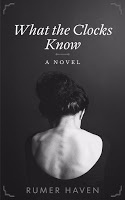
Thanks so much for hosting me, Shani!
On moving to London several years ago, I immediately stumbled upon Brompton Cemetery, and it’s been my favorite spot ever since. One of London’s “Magnificent Seven” cemeteries established in the 19th century, Brompton stretches for nearly forty acres and is my urban oasis. Much like Margot, the protagonist of What the Clocks Know , I felt quite lost when I first relocated from the States. Having moved for my husband’s job, I found myself without one of my own for a while, and without family and friends around either, my life felt rather isolated and aimless during that initial stretch.But Brompton was one place where peace and reflection came easily, so I chose to send Margot there as well in this story. The cemetery both heals and heightens her anxieties and, either way, compels her to return time and again. She isn’t certain if what she’s experiencing is paranormal or psychological, though, and Brompton becomes a key place for finding the answers.
The following excerpt originated somewhere between journal pages and coffee shop napkins, which I scribbled on during my early visits to the cemetery. The gravestones, statues, flora, and even fauna all triggered random thoughts that eventually gelled into this scene and others. And, yes, there really is a Charlotte Pidgeon.
Excerpt:
Margot edged closer to a tomb that echoed loudly with buzzing insects; when she peered into its blackness, a cool, ancient scent wafted to her face. Continuing to idle along, she scanned the moss and vines that clung to and devoured the markers sprouting all throughout this garden of marble and granite, the Gothic juxtaposed with the Romanesque, Celtic crosses with Grecian urns.
Stopping at another grave, she saw Christmas décor rotting away by her feet. A depressing sight in summer, the winter wreath made her fancy how the cemetery’s atmosphere must change with the seasons. She wouldn’t be in London long enough to see it burn in rust and gold, the falling leaves mimicking the footfall of a pursuing stranger and the plucked trees revealing more of the sky and buildings beyond. Yet she could imagine how, on one chilled day that would paint the scene gray, someone would kneel again at a name of diminishing meaning to the present world and place another wreath of scarlet ribbon and silver baubles. Only for it to waste away during another sunny spring and rainy summer as the cycle continued: lather, rinse, repeat.
The effect of time would be noticeable enough, and somehow she felt she’d already seen it all before and would again, her grandest déjà-vu yet. To preserve its enchantment, she didn’t analyze the reasons why this site had come to matter so much. She felt whole here. That was all to know.
But her bladder waited for no man, living or dead. Picking up her pace, Margot hightailed it to the cemetery’s rear exit until a shiver clenched the muscles between her shoulder blades. Despite
her urgency to get back home, she slowed to a full stop in front of a gabled gravestone. An ornate sprig of acacia crowned an inscription she hadn’t seen yet.
READER, STAY.
UNDERNEATH THIS STONE DOTH LIE
AS MUCH BEAUTY AS COULD DIE;
WHICH IN LIFE DID HARBOR GIVE
TO MORE VIRTUE THAN DOTH LIVE.
IF AT ALL SHE HAD A FAULT,
LEAVE IT BURIED IN THIS VAULT.
Rather than grab her pen and napkin to write the poem down, Margot just stood there, rereading it. Contemplating it. If there was an afterlife, could people really leave their failings behind to putrefy in the dirt, safe from anyone’s memory? She liked to think so.
Her gaze rose to the name chiseled in the stone.
CHARLOTTE PIDGEON
It so happened that Charlotte Pidgeon was born on the same day as Margot, but her year of birth was 1848 and year of death 1874. Despite all the other gravestones she’d recorded onto her napkin, copying anything down from this one somehow seemed blasphemous. So she just kept standing, with gravity fastening her in place. Gawking, until a weight on her breastbone made it more difficult to breathe.
The sensation was strange, no question. Margot had never felt anything like it. But she’d taken enough psychology courses as an advertising major to peg it for what it was: a psychosomatic response. The conditions were ideal for something like that. For one, the general creepy-factor of standing above hundreds of corpses as black birds crowed their ‘Evermores’ left and right. And now this moving inscription that kicked in her sympathies.
There was otherwise no meaning in it – even if, go figure, the given name should be Charlotte. A decent coincidence to add to her diary, but it wasn’t surprising that such a popular Victorian name would find its way on an English grave or the spine of an English book. She must have seen a dozen Charlottes in that lot alone by now, along with all the Alices, Emmas, and Janes.
And so what if their birthdays were the same? The ratio of 365 days to the billions of people ever born on Earth was basically nil. She had to stop pandering to what the human brain did naturally: form correlations when it noted them. Only this and nothing more.
Exhausted with her overactive imagination and fantastically bored with herself, she didn’t want to stand there anymore. But she didn’t want to walk anywhere else either. Breathing heavily through her nose as a numbness dulled her, she didn’t want to be anywhere in that moment, not even in her own skin. The effort and futility of life bore down on her as she considered all the bodies underground, all those who’d borne the burden of existence and thought it mattered until they didn’t exist or matter anymore – just rotted in boxes under her feet.
She had to go back to Rand’s. She didn’t want to; she needed to. Not for the toilet any longer, but a bath sounded nice – something that could warm her against the nip of her fears, wash away the soil she felt falling over her. Drown the thuds each shovelful made on the lid of her inner casket. That sounded purposeful enough.
Forgive my intrusion, Miss Pidgeon. I will leave you to rest in peace.

~ * ~
About What the Clocks Know:
Finding a ghost isn’t what Margot had in mind when she went ‘soul searching’, but somehow her future may depend on Charlotte’s past.
Woven between 21st-century and Victorian London, What the Clocks Know is a haunting story of love and identity. A paranormal women’s fiction, this title is available as of March 18, 2016 from Crooked Cat Publishing.
“A unique tale of the paranormal – as beautiful as it is haunting.”
~ Shani Struthers, author of Jessamine and the Psychic Surveys series
** Add it! **
http://www.goodreads.com/book/show/29368003-what-the-clocks-know
** Read it! **
Amazon US – http://amzn.to/21DZoCw
Amazon UK – http://amzn.to/1QsiFfr
~ * ~
Author Bio:

Rumer Haven is probably the most social recluse you could ever meet. When she’s not babbling her fool head off among friends and family, she’s pacified with a good story that she’s reading, writing, or revising—or binge-watching something on Netflix. A former teacher hailing from Chicago, she presently lives in London with her husband and probably a ghost or two. Rumer has always had a penchant for the past and paranormal, which inspires her writing to explore dimensions of time, love, and the soul. She debuted in 2014 with Seven for a Secret (in which a Jazz Age tragedy haunts a modern woman’s love life), and her award-winning short story “Four Somethings & a Sixpence” (about a bride who gets a little something she didn’t register for) was released in 2015. What the Clocks Know is her second novel.
Learn more about Rumer at:
Website – http://www.rumerhaven.com
Facebook – http://www.facebook.com/rumerhaven
Twitter – @RumerHaven


February 25, 2016
Something for the Weekend with Tim and Kimm!
Tim Taylor and Kimm Walker have a chat about writing on my blog…
It’s lovely to have fellow Crooked Cat authors, Kimm Walker and Tim Taylor on my blog today, telling us about how they met, and talking candidly about the process of writing and making a sale. Here we go…
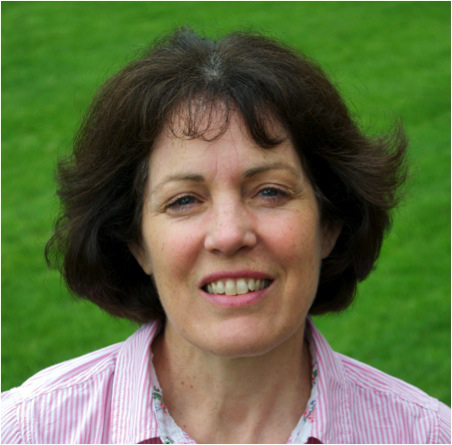 Tim and I are both Crooked Cat authors and met at Holmfirth Writers’ Group many years ago. We thought it might be interesting to do a head-to-head interview, as a change.
Tim and I are both Crooked Cat authors and met at Holmfirth Writers’ Group many years ago. We thought it might be interesting to do a head-to-head interview, as a change.
Tim: We’ve missed you recently from the writers’ group. I hope you’ve been able to work through the writer’s block you were suffering a while back?
Kimm: It’s true, I’ve turned away from “Writing” and given up some of the groups I used to regularly attend. Having poured whole years heart and mind into writing two books, Once Removed and A Life Less Lost, I was disappointed they didn’t go out and sell themselves, as per my romantic fantasy. Self-doubt is…
View original post 728 more words


February 13, 2016
Letters from Elsewhere: Rosamund Davis
Reblogged from Miriam Drori’s blog – Letters from Elsewhere…
 An' de walls came tumblin' down
An' de walls came tumblin' down
 Since beginning this series of posts, I’ve been visited by people from the near and distant past, people from the present and the future, people from real and made-up places, and someone who appears to have been visited by ghosts. But today’s visitor gives a new meaning to “elsewhere” since she has come from beyond to write to her (living) great-granddaughter. As you’ll see, Rosamund has some important advice to impart.
Since beginning this series of posts, I’ve been visited by people from the near and distant past, people from the present and the future, people from real and made-up places, and someone who appears to have been visited by ghosts. But today’s visitor gives a new meaning to “elsewhere” since she has come from beyond to write to her (living) great-granddaughter. As you’ll see, Rosamund has some important advice to impart.
Dear Ruby,
 How I wish I had known you in life, that I could have walked with you, talked with you. There is so much I want you to know… and much that I hope you never know. My daughter, Sarah, your grandmother, has done a wonderful job in raising you, ensuring, just like I did with her, that you realise how strong the light is, how pure, that the roles we undertake to live are just that: roles. We are players…
How I wish I had known you in life, that I could have walked with you, talked with you. There is so much I want you to know… and much that I hope you never know. My daughter, Sarah, your grandmother, has done a wonderful job in raising you, ensuring, just like I did with her, that you realise how strong the light is, how pure, that the roles we undertake to live are just that: roles. We are players…
View original post 533 more words


February 12, 2016
Why Jane Eyre Needs a Sequel with Luccia Gray
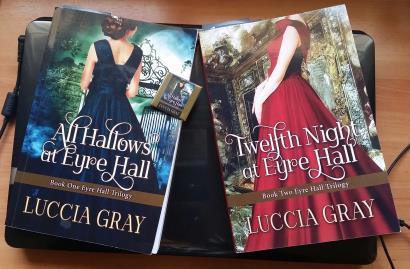 Jane Eyre by Charlotte Bronte is one of literature’s most fascinating books – certainly I’ve read it a good few times and love it. In fact, when people ask what my favourite book is, this is it, this is the one – only Wuthering Heights by Charlotte’s sister, Emily, comes anywhere close. So, when I found out Luccia Gray had written a sequel to it, I was intrigued and had to read it. I’ll let Luccia herself tell you all about why she wrote it and what it’s about but suffice to say it was wonderful being back in Jane’s world again as it twists and turns in several surprising ways. Take it away, Luccia…
Jane Eyre by Charlotte Bronte is one of literature’s most fascinating books – certainly I’ve read it a good few times and love it. In fact, when people ask what my favourite book is, this is it, this is the one – only Wuthering Heights by Charlotte’s sister, Emily, comes anywhere close. So, when I found out Luccia Gray had written a sequel to it, I was intrigued and had to read it. I’ll let Luccia herself tell you all about why she wrote it and what it’s about but suffice to say it was wonderful being back in Jane’s world again as it twists and turns in several surprising ways. Take it away, Luccia…

When I first read Jane Eyre, I was fascinated by Jane’s character and fortitude. She was an orphan who grew up in a hostile family, with her cruel Aunt Reed and her spiteful cousins. She later survived physical and emotional hardships, such as sickness, malnutrition, and humiliation, at Lowood Institution, yet she was determined and intelligent enough to become a teacher there. At eighteen, she had the resoluteness and optimism to apply for a job as a governess in order to gain further independence.
I was naturally overjoyed when she seemingly found true love in Mr. Rochester, and devastated to learn that not only was he already married, but that he had imprisoned his mad wife in his windowless attic at Thornfield Hall, in the care of the drunken Grace Poole. Then Jane’s hardships started anew. She abandoned Thornfield and was forced to beg for a job and shelter. I was overjoyed that she found Mary, Diana, and St. John, who were cousins, as yet unknown to her.
I was relieved that she didn’t accept St. John’s proposal, and mesmerized by her ability to hear Mr. Rochester call her across the Moors in a moonlit night. When she inherited her Uncle John’s fortune and shared it with her cousins, it was obvious that her life was on the mend. When she finally travelled back to Thornfield Hall and discovered that it had been burnt down and Bertha Mason was dead, I knew Jane would be rewarded with a happy ending, and she was. ‘Reader, I married him,” she told us, and I sighed with immense relief and joy.

I was about fourteen at the time. Jane was blind because she was nineteen and in love, and I was blind because I was young enough to believe Jane’s happiness would be eternal.
Twenty years later, an English Teacher from Denmark, Anne, suggested I read Wide Sargasso Sea, by Jean Rhys, and that’s when I understood that every story has two sides, at least. I started wondering what kind of a man Rochester really was, and if Jane’s happiness would have lasted.
Sixteen years later, when I was a College Professor, preparing my classes on Postcolonial Literature in English, I realized there was a counter narrative in which the colonial cultures wrote their way back into world history, which the dominant Europeans had written.
I know what you’re thinking, and you’re right, it took me a long time to realize that Jane Eyre did not tell the whole story. I was almost fifty. I suppose it took me that long to acquire the life experience, and academic and literary knowledge to realize that Jane Eyre was unfinished for two reasons: the arbitrary (albeit necessary) choice of end point, and the spaces left within the narrative.
Jane was only nineteen, when the main events occurred, and probably just a couple of years older when the autobiography was written. The last few paragraphs of Jane Eyre, where she moves the story on a few years, are a couple of rushed and imprecise paragraphs. The last we are told is that Rochester recovers his eye-sight and has his first-born son in his arms. It’s an open ended story, because the rest of their marriage is open to discussion.
That’s when I realized that Orson Wells had the key to a happy ending: ‘If you want a happy ending, that depends on where you stop the story.’
Charlotte Bronte stopped where she wanted to stop, but Jane Eyre, like all works of art belong to the beholder, and readers are free to reinterpret any work of art. I am neither the first nor the last to do so. I’ve written a post about this called sequels, prequels, reinterpretations, rewritings, and writing back, which deals with this topic in greater depth.
The second reason follows on from the first. I agree with Derrida that ‘there is nothing outside the text’. Everything I have written is based on the spaces between the lines of Jane Eyre. I’ve created an intertextual and diachronic mélange in my mind, which I have translated into a trilogy.
I had four objectives when I decided to write The Eyre Hall Trilogy:
Firstly, my aim was to expose Rochester as a tyrant and revindicate Bertha Mason as his victim. I am sure that Jane Eyre would have become another victim, given a few years, which is what is disclosed in my novel.
Secondly, I wanted to make sure that amends would be made, so Bertha’s daughter (my creation) would be reinstated, and Jane would find happiness and lasting love, with another, worthier man (my creation).
Thirdly, I’ll admit I’m an irreverent, daring, and provocative writer, who looks to her favourite writers for inspiration. The Eyre Hall Trilogy is meant as a tribute to many Victorian (and some 20th century) authors and their literary creations such as:

Jane Austen, Mary Wollstonecraft, Mary Shelley, Charlotte, Emily and Anne Bronte, Charles Dickens, Wilkie Collins, Dante Gabriel Rossetti, Elizabeth Barrat Browning, Robert Browning, Sir Arthur Conan Doyle, Alfred, Lord Tennyson, Thomas de Quincey, C. S. Forrester, George Elliot, Robert Louis Stevenson, Oscar Wilde, Daphne du Maurier, Jean Rhys, and so many more, whose works are firmly lodged in my literary mind.
Finally, I aim to write novels that will entertain readers and transport them to another time and place, to a pre-digital and pre-electronic age, where our great-great grandparents lived and loved, just as intensely as we do today, in spite of not having light-blubs, cars, phones or tablets.
If my readers are encouraged to read or reread the classics, that would be an extra bonus!

Interested? Go straight to Luccia’s Amazon page or find out more on the following links:
Luccia Gray’s Blog: Rereading Jane Eyre
Luccia Gray’s Amazon Author Page
@LucciaGray on Twitter
Luccia Gray Author of The Eyre Hall Trilogy on Facebook
Lucy Shares Lovely Books on Facebook


February 7, 2016
#Author Spotlight Shani Struthers and #BookReview ‘Eve: A Christmas Ghost Story’
On Luccia Grey’s blog talking about ‘Eve’, ghosts and future projects.
What do you do when a whole town is haunted?
In 1899, in the North Yorkshire market town of Thorpe Morton, a tragedy occurred; 59 people died at the market hall whilst celebrating Christmas Eve, many of them children. One hundred years on and the spirits of the deceased are restless still, ‘haunting’ the community, refusing to let them forget.
In 1999, psychic investigators Theo Lawson and Ness Patterson are called in to help, sensing immediately on arrival how weighed down the town is. Quickly they discover there’s no safe haven. The past taints everything.
Hurtling towards the anniversary as well as a new millennium, their aim is to move the spirits on, to cleanse the atmosphere so everyone – the living and the dead – can start again. But the spirits prove resistant and soon Theo and Ness are caught up in battle, fighting against something that knows their…
View original post 1,356 more words


February 5, 2016
Something for the Weekend with Beatrice Fishback
 A big welcome today to Beatrice Fishback, author of Bethal Manor, due to be released by Crooked Cat Publishing in Spring 2016. Here she tells us what inspired her to write it and shares an excerpt – take it away, Beatrice…
A big welcome today to Beatrice Fishback, author of Bethal Manor, due to be released by Crooked Cat Publishing in Spring 2016. Here she tells us what inspired her to write it and shares an excerpt – take it away, Beatrice…
Why would an American (that would be me J) from upstate New York write an inspirational historic novel, titled Bethel Manor that takes place in England? Having had the privilege of living in the East Anglian area of Great Britain for a total of twenty years, I am a woman whose heart is divided by her love for both countries. And I’ve learned to appreciate—although not always understand—each culture’s viewpoint.

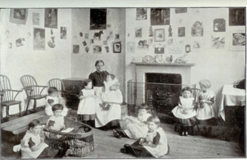 However, this novel is not a commentary on all things different between the U.S. and the U.K. (there are a plethora of books and YouTube videos if you’re interested). This is about Bethel Manor, and a young man named James Blackwell who was raised in an orphanage in Bristol, England by owners George and Margaret Owen.
However, this novel is not a commentary on all things different between the U.S. and the U.K. (there are a plethora of books and YouTube videos if you’re interested). This is about Bethel Manor, and a young man named James Blackwell who was raised in an orphanage in Bristol, England by owners George and Margaret Owen.
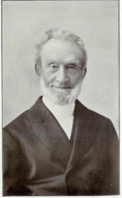 Although the Victorian love story is about an orphan, James Blackwell, and his chance encounter with the wealthy Clare Shaw, the original idea for my story came from the life of a true gentleman named George Mueller. George was an evangelist and the Director of the Ashley Down orphanage in Bristol during the mid-19th century. During his lifetime, over 10,000 children were under his care and his desire was to train and educate each. He established 117 schools where 120,000 children were educated during his lifetime.
Although the Victorian love story is about an orphan, James Blackwell, and his chance encounter with the wealthy Clare Shaw, the original idea for my story came from the life of a true gentleman named George Mueller. George was an evangelist and the Director of the Ashley Down orphanage in Bristol during the mid-19th century. During his lifetime, over 10,000 children were under his care and his desire was to train and educate each. He established 117 schools where 120,000 children were educated during his lifetime.
Bethel Manor begins with the idea of a couple—George and Margaret Owen—dedicating their lives for the benefit of unloved children during the challenging time of the Industrial Revolution in England. George Mueller and his wife were my inspiration.
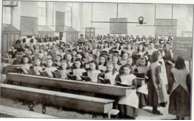
Both Americans and Englishmen will read not only about the romantic love between two individuals in Bethel Manor, but the remarkable love of a couple for unwanted children. I, for one, have found these types of sacrificial people in both countries and am grateful that I have had the privilege to know them all.
Bethel Manor will be released Spring 2016 from Crooked Cat Publishing, UK.
www.facebook.com/Beasattitudes
Excerpt from Bethel Manor:
“James?”
He bolted upright. “What? Who’s there?” His sweaty body trembled in the bitter dampness of the darkened room. Coals in the inglenook fireplace, whose meager heat had escaped long ago, formed a heap of cold ashes.
“It’s me. You cried out in your sleep.” Flickering candlelight played along the peppered beard on George Owen’s globe-shaped face as he cupped a candlestick in his calloused hand. Moonlight filtered through the small, latticed windows covered with frosty mist. “Are you all right?”
James leaned against the backboard and shivered. “It was the same dream as before.” Miniature clouds of breath floated upwards and vanished into the black canopy of the room.
George perched on the edge of the bed, and the rope foundation settled with a low, deep groan. The other twelve boys in the room twisted and turned in their cots.
George whispered, “Your dream about leaving?”
“Yes.”
George placed the candlestick on the small bedside table. “Perhaps it’s time to began your quest. To find the answers you seek.” Resting his hand on James’ shoulder, he gently squeezed. “You’re old enough now to stretch your wings and fly. To begin the journey God ordained for you long ago.”
“I’m not so sure I believe…” James’s crossed arms not only held in his body’s warmth but his stubbornness toward God’s love. “How can I believe in a God who’d allow parents to leave their children for others to raise?”
About the author: Beatrice Fishback is a Yankee who has traveled the world as a military spouse and lived in Europe for a total of twenty-years. She is the author of Loving Your Military Man by FamilyLife Publishing and, with her husband Jim, is the co-author of Defending the Military Marriage and Defending the Military Family. She has been published in various compilations, magazines and online websites.
She and her husband have spoken to audiences in the U.S.A, Germany, England, Italy, Turkey, Saudi Arabia, Spain, Korea, and Japan. They have also presented to international audiences in the Czech Republic, Turkey, Kazakhstan, Zimbabwe, Romania, Ukraine, Bulgaria, and Latvia.
Beatrice and Jim currently reside in North Carolina where scones are called biscuits and are topped with gravy, and tea is served over ice.


February 1, 2016
Psychic Surveys: The Inspiration…
You hear it so many times; the great horror movies of our time – Poltergeist, The Amityville Horror and Texas Chainsaw Massacre for example – are inspired by true events. So many times, in fact, you begin to take it with a pinch of salt, doubt it even. After all, these are ‘horrors’, hyped up for an audience who love nothing more than to be scared witless. But since becoming a paranormal writer myself, I give that claim more credence. Hyped up they may be but truth is always stranger than fiction.
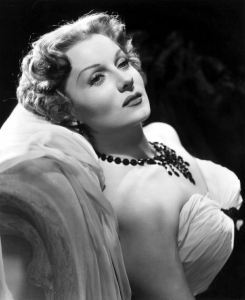 The Haunting of Highdown Hall has its roots firmly in truth. Not only with regard to the main case where movie star, Cynthia Hart, still resides within her hallowed four walls, despite having died in 1958, but in all the ‘mini’ cases scattered around it. Cynthia’s story is based on a tale I heard years ago. I can’t say who the movie star is but she was one of the cinematic greats. Some years after her death, her house was inherited by a friend of a friend, only for him to discover she was still very much ‘in’ it. As for her bedroom, still kept as a shrine to her – he couldn’t even enter it. It was as though invisible hands were pushing him out and he got the sensation of a voice ‘screaming’ at him. He called in a team of psychics and they dealt with it (or should I say ‘her’) and he lived there happily for many years afterwards. Hearing this story, I couldn’t help but wonder: what was holding her there, fear, despair or something darker, much darker? Transfer that story to fiction and that’s what the Psychic Surveys team have to find out.
The Haunting of Highdown Hall has its roots firmly in truth. Not only with regard to the main case where movie star, Cynthia Hart, still resides within her hallowed four walls, despite having died in 1958, but in all the ‘mini’ cases scattered around it. Cynthia’s story is based on a tale I heard years ago. I can’t say who the movie star is but she was one of the cinematic greats. Some years after her death, her house was inherited by a friend of a friend, only for him to discover she was still very much ‘in’ it. As for her bedroom, still kept as a shrine to her – he couldn’t even enter it. It was as though invisible hands were pushing him out and he got the sensation of a voice ‘screaming’ at him. He called in a team of psychics and they dealt with it (or should I say ‘her’) and he lived there happily for many years afterwards. Hearing this story, I couldn’t help but wonder: what was holding her there, fear, despair or something darker, much darker? Transfer that story to fiction and that’s what the Psychic Surveys team have to find out.
The ‘mini’ cases too are drawn from real life, for example, the little boy that ‘haunts’ his bedroom, taking an active dislike to the new child that has moved in there and the tormented young man in Paul Ashworth’s flat that is hell bent on driving him out. Both were based on psychic cleansings I took part in (I rung the bells in dark corners to break down negative energy!). Although the owners were terrified, when you find out the history of the spirit, when you can ‘communicate’ with them, you realise that tormented is exactly what they are and often just need some understanding, validation even and gentle encouragement to ‘move on’. Happily, both cleansings were successful and the owners reported no more paranormal activity occurring afterwards.
Aside from the cases, the ‘business’ of Psychic Surveys is rooted in truth. Imagine if you didn’t have to hunt around for this service, if domestic spiritual clearance was widely available – we’re talking high a street presence here, alongside estate agents, solicitors and travel agents. An idea considered in reality, we decided the business was better off in fiction – the aim of it to put the normal into paranormal, to remove the taboo. Young psychic, Ruby Davis, heads up the team and, suffice to say, business is booming!
The Haunting of Highdown Hall is available on Amazon and all good bookshops. It’s sequel, Psychic Surveys Book Two: Rise to Me is also available. Book Three: 44 Gilmore Street is due out in early 2016. All published by Crooked Cat Publishing. The Prequel to the Psychic Surveys series – Eve: A Christmas Ghost Story is also available.



January 29, 2016
A Trip to the Tower…
When Ruby and Cash met Kindred Spirits!
Ruby, Cash, lovely to see you, so glad you could make it along to the Tower today, to celebrate Crooked Cat Publishing’s paranormal-themed promotion week. Sadly, it’s a bit of a busy one for me this week, so I’m going to hand you over to Anne Boleyn, once we can track her down – she always was a good hostess.
Cash: Ruby, Ruby! Did you hear that? We’re going to meet Anne Boleyn.
Ruby: Yeah, I know, but once you’ve met one ghost you’ve met them all.
Cash: How can you be so flippant about it?
Ruby: Cash, for goodness sake, keep your hair on!
Cash: My hair on? Don’t you mean–
Ruby: Shush, here she is. What should we do, take a bow or something?
Anne, it’s good to see you! This is Ruby and Cash, they belong to Psychic Surveys; I thought you…
View original post 1,187 more words





